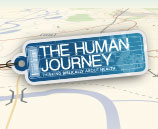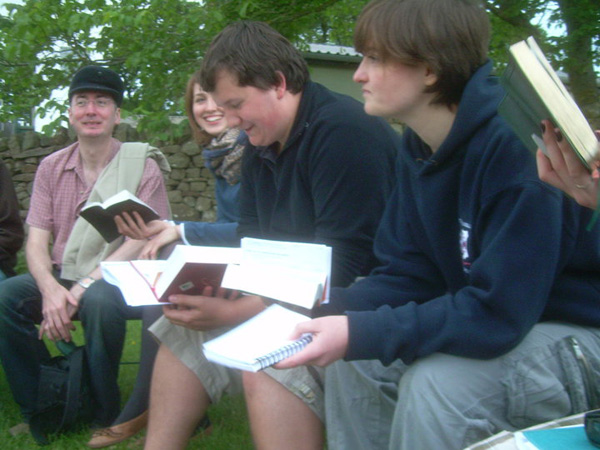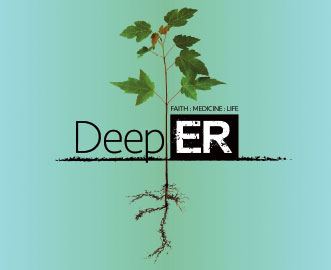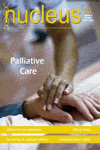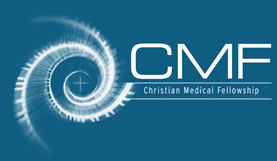When I was nine, I wanted to be an ice cream seller when I grew up. At about the age of ten God changed all that and told me in a number of ways, over a period of time, that he wanted me to become a doctor instead. In particular he placed the continent of Africa on my heart.
Big dreams
Sometimes, when people ask me what kind of doctor I want to be, I feel a little uncomfortable saying, ‘I want to be a missionary surgeon in Africa, capable of dealing with whatever case comes through the door. At the same time, I want to be involved in Western media and politics to change things in Africa, not just at a local level but also continent-wide.’
I feel awkward because these dreams seem too grand for me; I feel almost arrogant whispering them because I know all my weaknesses. I am so aware of how I am inadequate, hopeless and inept. Partly too, I feel I am maybe a little naïve: will Africa ever change anyway? Am I just away with the fairies? Yet, I know these are the outlines of dreams God has placed on my heart.
Often God has bigger dreams for us, and more belief in us than we have in ourselves. But then, he does have a more accurate picture of his own capabilities and more strength than we do. We do believe this, but frequently in theory rather than practice, and for others rather than ourselves. So we settle for limited goals and success.
I never really wanted to do an intercalated BSc, so I decided to take a year out after my 3rd year at medical school. I wanted to do something that would be challenging, a rest, an adventure and partly related to medicine. Mercy Ships encompassed all of this, so I spent a year on the Anastasis – the world’s largest non-governmental hospital ship.
Mercy Ships is a 25 year old organisation, set up with the aim of using shipping ports to access poor cities and provide medical care to those who need it. There are three ships: the Caribbean Mercy serves South America; the Africa Mercy is currently undergoing refit and will be launched to serve Africa alongside the Anastasis (meaning ‘resurrection’ in Greek), later this year.
The Anastasis
With 400 crew, the Anastasis is really like a floating town with a bank, shop, snack bar, library, swimming pool, post office, fire station, school, football team and so on. There is a captain, plumbers, cooks, electricians and others. The crew come from over 30 different nations and most speak good English. The age range is from about three months to 70 years old! Some families have lived on the ship for 15 years or more. The Anastasis has three operating theatres and a 50 bed ward. There are also crew running long term projects in some of the countries the ship serves. Simple irrigation, agricultural, building, business and health principles are taught and implemented practically.
I worked sterilising the operating instruments in theatre; it was the best possible job (second to being the actual surgeon, which they wouldn’t let me do!) as I got to see amazing surgery every day, as well as learning the names of the instruments and how they work. About 800 operations are performed in the four month period that the ship spends in each country. The motto of Mercy Ships is ‘bringing hope and healing’ and recently, these efforts have been concentrated in Sierra Leone. This region is in a critical rebuilding phase after a ten year rebel war left it and neighbouring Liberia the poorest countries in the world.
Operations and care
Operations are provided free with the aim of meeting the needs of the poor and showing them God’s love in the process. All of the procedures are life changing, and many of them are life saving. Eye operations include cataracts, strabismus and extraction. Maxillo-facial procedures include repairing cleft lips and palates, as well as removing massive mandibular tumours, parotid tumours and noma (see below). In orthopaedics, club feet, polio contractures and post-fracture deformities are repaired. Gynaecological surgery repairs fistulae between vagina and bladder caused by obstructed labour or aggressive rape, resolving the associated incontinence. Hernias, neurofibromas, goitres, keloids and lipomas are treated in general surgery.
Sadly, the local use of witch doctors and belief in curses are all too real and more harm than good is often inflicted by these folk remedies. For example, skin complaints may be treated with potent chemicals, resulting in permanent damage and scarring. Those born with cleft lips are believed to be evil and are stoned if they stray outside their home.
Clerette, now 9 years old, had been disfigured since the age of 4. She suffered from a condition called noma (cancrum oris), a horrendous gangrenous facial infection not seen in Europe since the Nazi concentration camps, but still affecting thousands in Africa. Most of these people will die from associated breathing and eating difficulties, but some survive with little hope of school, work, marriage or a normal life. The pathogens responsible for this disease process are multiple, Fusobacterium necrophorum is particularly important, taking advantage of the cruel combination of immunosuppression, malnutrition and poverty. Massive, complex surgery involving several stages is required to reconstruct the hole in the face.
Following surgery, Clerette can look forward to a normal life again and, with time, she will be left with only a small scar. But she has already lived a number of years knowing absolute rejection, so it is vital that the ship not only provides medical treatment, but also offers the hope of knowing Jesus and his unconditional love.
The ward is just one place for demonstrating this. It is unlike your average NHS ward! Colourful blankets and pictures, together with music and films (such as VeggieTales) create a vibrant atmosphere. There are many activities to occupy the children as they recover - colouring pictures is a favourite (and not just among the kids!), as is learning to knit, walking on deck and so on. Each patient is adopted by a crew member who will visit them each day and the onboard school for crew children also perform songs, dances and poems as entertainment.
A vision for the future
My time on the ship helped me to remember my reasons for first entering medical school. It provided me with an opportunity to take a glance forward to the kind of work God has in front of me but also gave me a taste of it now and a new sense of inspiration and affirmation to take back to my final two years of study.
In addition, I didn’t realise it initially but I think my time on the Anastasis not only challenged me, but my friends and family as well. When you push boundaries and step outside the box of normal everyday living, it often inspires others to do so as well.
God can do immeasurably more than we can ever imagine. He has great plans in mind for each one of us – and all different! What dreams does he have for you?















